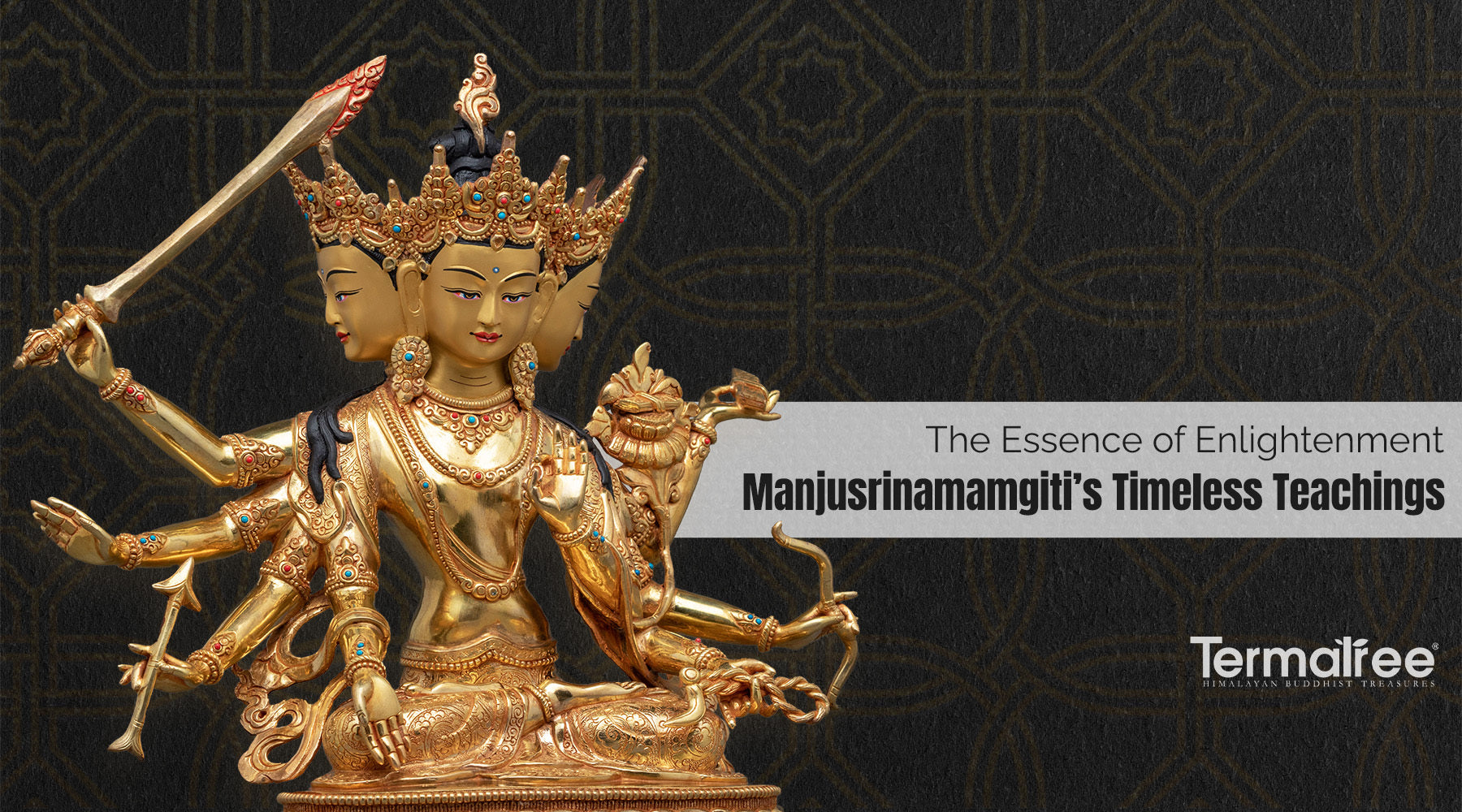Manjusrinamasamgiti: The Chant of the Names of Manjusri
Translated as "The Chant of the Names of Manjusri," the Manjusrinamasamgiti is an essential literature in Mahayana Buddhism that is especially highly regarded in the Vajrayana school. This sacred text captures the essence of Manjusri, the Bodhisattva of Wisdom, and serves as both a profound spiritual guidance and a liturgical composition.
Key Takeaways
- Manjusrinamasamgiti is a central text in Mahayana and Vajrayana Buddhism.
- It focuses on Manjusri, the Bodhisattva of Wisdom.
- The text is used for meditation, recitation, and as a study guide in Buddhist practice.
- It contains profound philosophical teachings and is revered for its spiritual significance.
Historical Background
| Aspect | Description |
| Origin | 1st Millennium CE |
| Focus | Manjushri- Bodhisattva Of Wisdom |
| Usage | Meditation, Recitation, Philosophical Study |
| Influence | Significance in Mahanyana & Vajrayana Buddhism |
- Origin and Development
It is thought that the Manjusrinamasamgiti dates back to the first millennium CE. Although its precise historical origins are partially transparent, it is generally acknowledged as a significant text in the Buddhist canon. It is believed that the text was first written in Sanskrit and then translated into Tibetan and Chinese, among other languages.
- Spread and Influence
The book became a mainstay of many Buddhist schools' practices as it traveled throughout Tibet, India, and China. Its impact goes beyond simple study and recitation; it has influenced many kinds of art, culture, and spirituality in these areas.
The Nama-samgiti, delivered by Shakyamuni Buddha to disciple Vajrapani and his fierce retinue, aims to guide them towards Buddhahood. At its core, the Nama-samgiti emphasizes Manjushri bodhisattva as the embodiment of all knowledge. Despite its brevity—approximately 160 verses and a prose section—it holds profound significance.
According to Shakyamuni Buddha, it serves as the "chief clarification of words" and embodies the "nondual reality." Hence, all sentient beings must engage in the study and recitation of the Manjushri-nama-samgiti.
Spiritual Significance
- Manjusri: The Bodhisattva of Wisdom

- Click here to view our Manjushri Namasamgiti Statue
The Manjusrinamasamgiti's principal character, Manjusri, represents the pinnacle of wisdom. He is frequently seen clutching a lotus, which stands for purity, and a sword, which symbolizes the ability to slay ignorance. Manjusri is respected as an embodiment of enlightened wisdom, which leads creatures to know the ultimate truth.
- The Role in Buddhist Practice
In meditation and recitation, the Manjusrinamasamgiti is utilized to help practitioners gain knowledge and insight. It is frequently chanted to remove obstructions from one's spiritual practice path and to increase one's ability for profound awareness.
The Scripture and Its Teachings
- Structure and Composition
The Manjusrinamasamgiti is composed of verses that enumerate the various names and attributes of Manjusri. These verses are rich in symbolism and metaphysical concepts. The text is structured so that each verse unfolds deeper layers of meaning, guiding the practitioner into a contemplative state.
- Philosophical Themes
The literature explores several issues, including the essence of existence, the idea of emptiness (śūnyatā), and the way to attain enlightenment. It offers a non-dualistic perspective on reality in which the boundaries between subject and object are transcended, and the nature of phenomena and consciousness are realized directly.
Practices and Rituals
- Recitation and Meditation
It is customary to recite the Manjusrinamasamgiti to gain blessings and enhance one's comprehension of Buddhist teachings. A common approach in the practice is visualization, in which the practitioner imagines that Manjusri is there and asks for his blessings to achieve knowledge.
- Rituals in Different Traditions
Each Buddhist tradition has its unique way of reciting texts and ceremonies. For example, recitation is frequently a component of complex ceremonies in Tibetan Buddhism that may include music, dancing, and offerings.
Impact on Buddhist Thought
- Influence on Mahayana Buddhism
The Manjusrinamasamgiti has greatly inspired Buddhism in the Mahayana school. Many Mahayana schools have developed around its teachings on wisdom and the nature of reality.
- Contributions to Buddhism in Vajrayana
The literature is essential to many advanced meditation techniques and intellectual discussions in Vajrayana. It is frequently recited as part of intricate visualization and mantra chanting procedures seen in tantric rituals.
Comparative Analysis
- Similarities with Other Texts
There are similarities between the Manjusrinamasamgiti and other Buddhist texts, especially those that highlight different Bodhisattvas. It highlights the idea of emptiness and the transcendent character of knowledge, just as the Prajñāpāramitā teachings.
- Unique Aspects
Despite these parallels, the text's emphasis on knowledge and thorough listing of Manjusri's qualities give it a distinctive stand. It is among the rare writings focusing only on the Buddhist personification of knowledge.
In Buddhist literature, the Manjusrinamasamgiti is a significant and enduring work. In addition to guiding spiritual practice and meditation, it provides a profound understanding of the nature of knowledge and enlightenment. Its teachings within Buddhist thought and practice are a timeless treasure that inspires and assists practitioners on their spiritual journeys.




